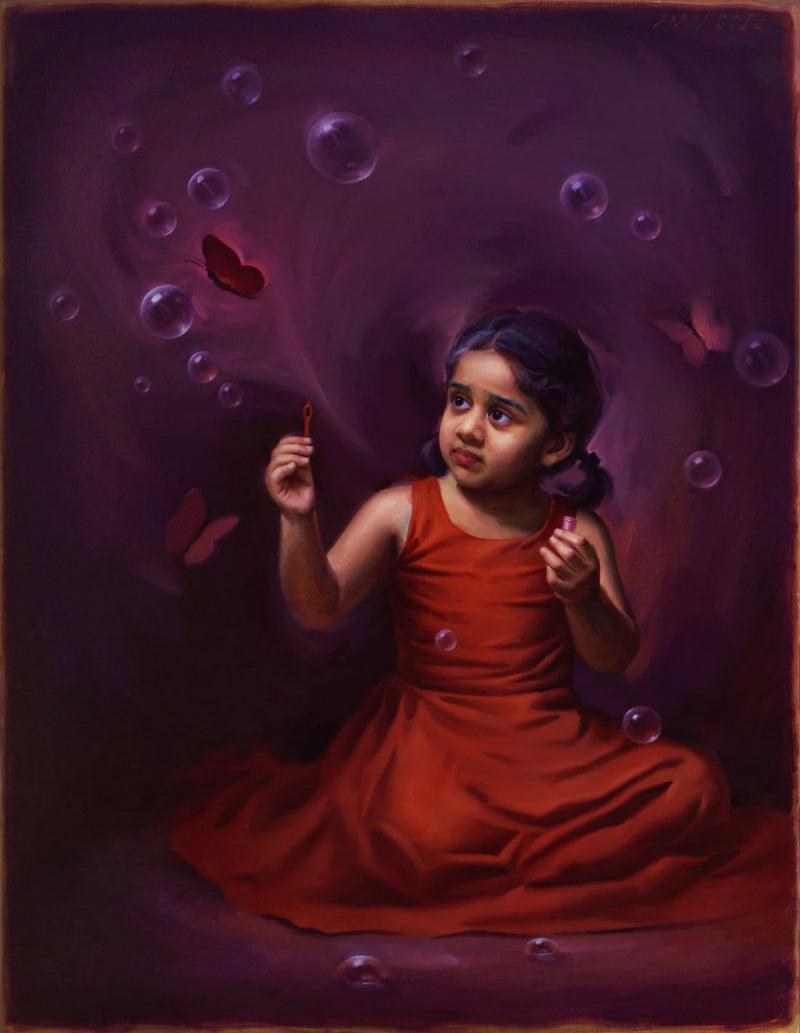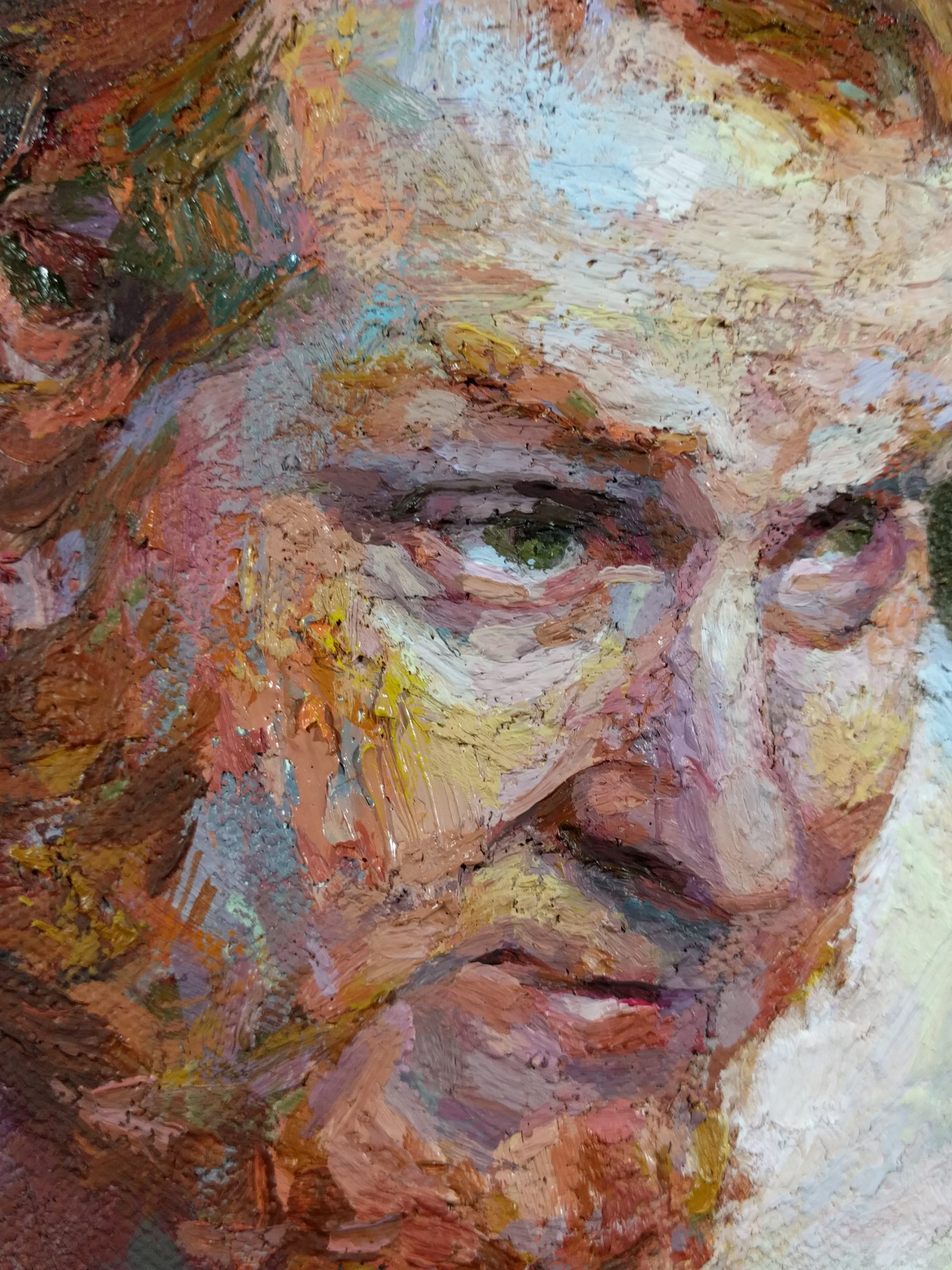Discovering Iconic Artists and Their Influences on Figurative Oil Painting
Discovering Iconic Artists and Their Influences on Figurative Oil Painting
Blog Article
The Development of Figurative Oil Painting: Recognizing Its Historic Relevance and Modern Interpretations
The development of figurative oil painting offers as a compelling lens via which to analyze the interaction between imaginative expression and historical context. Contemporary musicians, drawing from this rich heritage, are currently reinterpreting the human figure in methods that challenge standard stories.
Origins of Metaphorical Oil Paint
The origins of metaphorical oil painting can be traced back to the very early Renaissance in Europe, particularly in the 15th century. This period noted a significant separation from the flat representations and inflexible forms characteristic of middle ages art. Musicians began to check out naturalism, stressing the human figure and its emotional expression. The advancement of oil paint enabled higher depth of color and detail, boosting the realistic look and vibrancy of their work.

In this transformative period, numbers were commonly illustrated within contextually abundant atmospheres, showcasing not only their physical characteristics but additionally their emotional states. Leaders such as Jan van Eyck and Titian took advantage of the medium's flexibility, employing layering techniques to attain luminance and structure. This development facilitated the representation of complex materials and the subtleties of complexion, adding to the growth of portrait and narrative scenes.
In Addition, the Renaissance focus on humanism promoted a recognition for individuality, which in turn affected artists to develop more vibrant and relatable figures - figurative oil painting. Consequently, figurative oil paint became an effective automobile for storytelling and psychological engagement, preparing for future creative activities and styles
Key Historical Activities
Considerable historical motions have actually shaped the advancement of figurative oil paint, each contributing one-of-a-kind viewpoints and strategies that expanded the tool's possibilities. The Renaissance marked a crucial moment, stressing realism and the human type, with musicians like Leonardo da Vinci and Michelangelo pushing the borders of anatomical accuracy and viewpoint. Following this, the Baroque era brought remarkable contrasts of light and darkness, exemplified by Caravaggio, that instilled spiritual styles with extreme emotionality.
The 19th century presented Romanticism and Realism, where artists such as Delacroix and Courbet tested classical suitables, concentrating on specific expression and everyday life. The development of Impressionism further transformed the tool by stressing the effects of light and color, causing a separation from traditional representation.
In the early 20th century, motions like Expressionism and Cubism redefined metaphorical paint through abstraction and the exploration of emotional depth. Each of these motions not just mirrored the social changes of their times but likewise laid the foundation for modern analyses. The interaction in between these historic activities has actually created a rich tapestry of viewpoints and styles, influencing contemporary artists in their quest of catching the human experience on canvas.
Methods and Products Development

Throughout the Baroque duration, techniques such as chiaroscuro and sfumato arised, enhancing the psychological resonance of metaphorical structures. Artists started to experiment with lusters and impasto, manipulating appearance and luminosity. By the 19th century, innovations like using pre-mixed paints in tubes revolutionized access, enabling musicians to paint en plein air and record the fleeting impacts of light.
The 20th century witnessed the introduction of artificial pigments and mediums, which increased the palette and changed the uniformity of oil paints. Furthermore, the expedition of new application methods, such as scheme knives and brushes of differing rigidity, further varied imaginative expression. Collectively, these improvements mirror the evolving connection in between products, techniques, and the creative vision integral in figurative oil painting.

Contemporary Analyses
Contemporary analyses of metaphorical oil paint mirror a vibrant discussion in between practice and innovation, where musicians test developed standards and discover varied motifs. This advancement shows up in numerous means, as modern musicians blend classic methods with modern concepts, frequently dealing with social, political, and personal narratives.
Many practitioners draw inspiration from historic jobs, yet they instill their pieces with contemporary perspectives, making use of the human form as a vehicle for discourse on identification, society, and gender. Artists significantly explore abstraction, distortion, and blended media, which permits a broader analysis of the figure and its context.
Moreover, making use of brilliant color schemes and unique structures often offers to interrupt traditional watching experiences, provoking crucial involvement from audiences. This change in focus extends past aesthetic appeals; it reflects an expanding awareness of the intricacies of human experience in an interconnected world.
As metaphorical oil painting proceeds to evolve, it continues to be an important tool for exploring the subtleties of contemporary life, symbolizing both a respect for heritage and a commitment to dynamic thought. The outcome is a rich tapestry of expression that reverberates with the intricacies of the modern human problem.
Impact on Modern Art
The influence of figurative oil painting on contemporary art is extensive, as it has actually continually influenced a myriad of imaginative activities and practices throughout the 20th and 21st centuries. From Expressionism to Surrealism and past, the expedition of the human number has stayed a central style, permitting musicians to convey complex feelings and stories. This emphasis on figurative depiction has actually resulted in a re-examination of standard strategies, causing innovative approaches that blend realism with address abstraction.
Additionally, modern musicians have actually accepted metaphorical oil paint as a method to resolve political and social concerns, making use of the tool to test assumptions of culture, gender, and identity. The resurgence of passion in metaphorical operate in current years shows a yearning for connection in an increasingly digital globe, where human experience and feeling are vital.
Furthermore, the discussion between figurative oil painting and modern-day art appears in the jobs of artists such as Kehinde Wiley and Jenny Saville, who make use of historic recommendations while infusing their items with modern relevance. Ultimately, metaphorical oil paint remains to form and redefine modern-day creative Get the facts expression, underscoring its long-lasting relevance in the art world.
Conclusion
The advancement of metaphorical oil painting emphasizes its historical significance and flexibility throughout various imaginative motions. From the naturalism of the Renaissance to the emotive expressions of the Baroque and the cutting-edge methods of modernity, this medium has actually continually changed. Contemporary interpretations mirror lively colors and unique structures, fostering important engagement with political and social themes. Inevitably, figurative oil paint remains a crucial medium for discovering the human experience, resonating exceptionally in today's electronic landscape.
The evolution of figurative oil paint offers as a compelling lens through which to take a look at the interaction between creative expression and historic context.Substantial historical movements have formed the advancement of metaphorical oil painting, each contributing special ideologies and strategies that expanded the tool's opportunities.As historical motions formed the trajectory anchor of metaphorical oil paint, the materials and methods utilized by musicians have actually additionally undertaken significant transformations. figurative oil painting.The impact of figurative oil painting on contemporary art is profound, as it has continuously influenced a myriad of creative motions and methods throughout the 21st and 20th centuries.The development of metaphorical oil painting highlights its historical importance and versatility across various artistic movements
Report this page